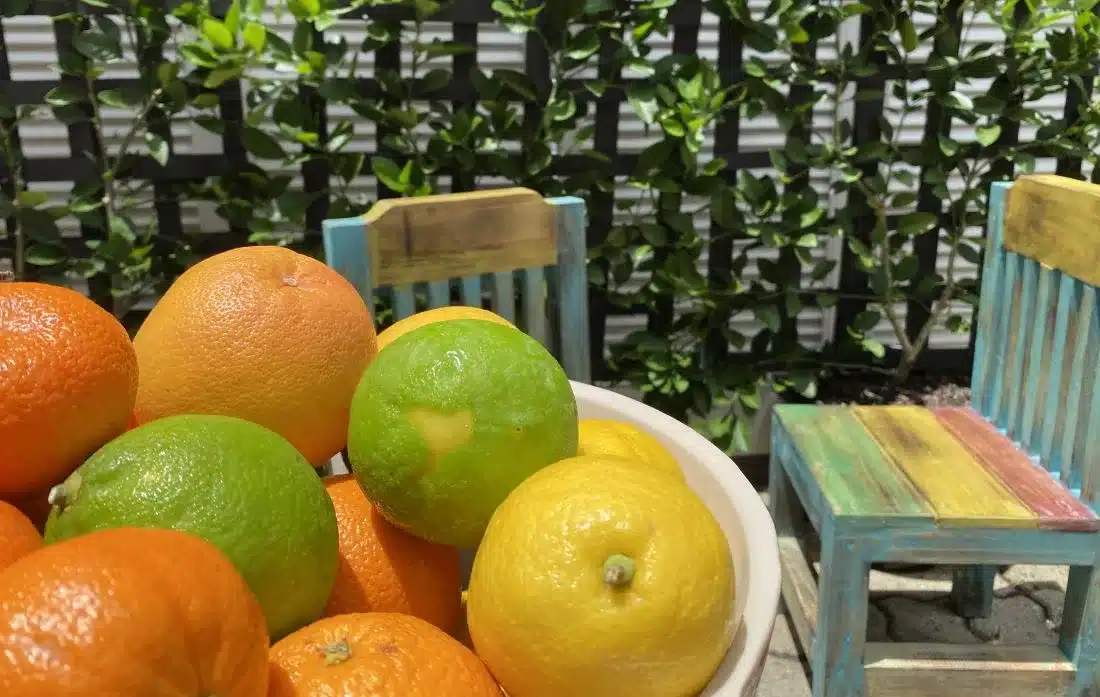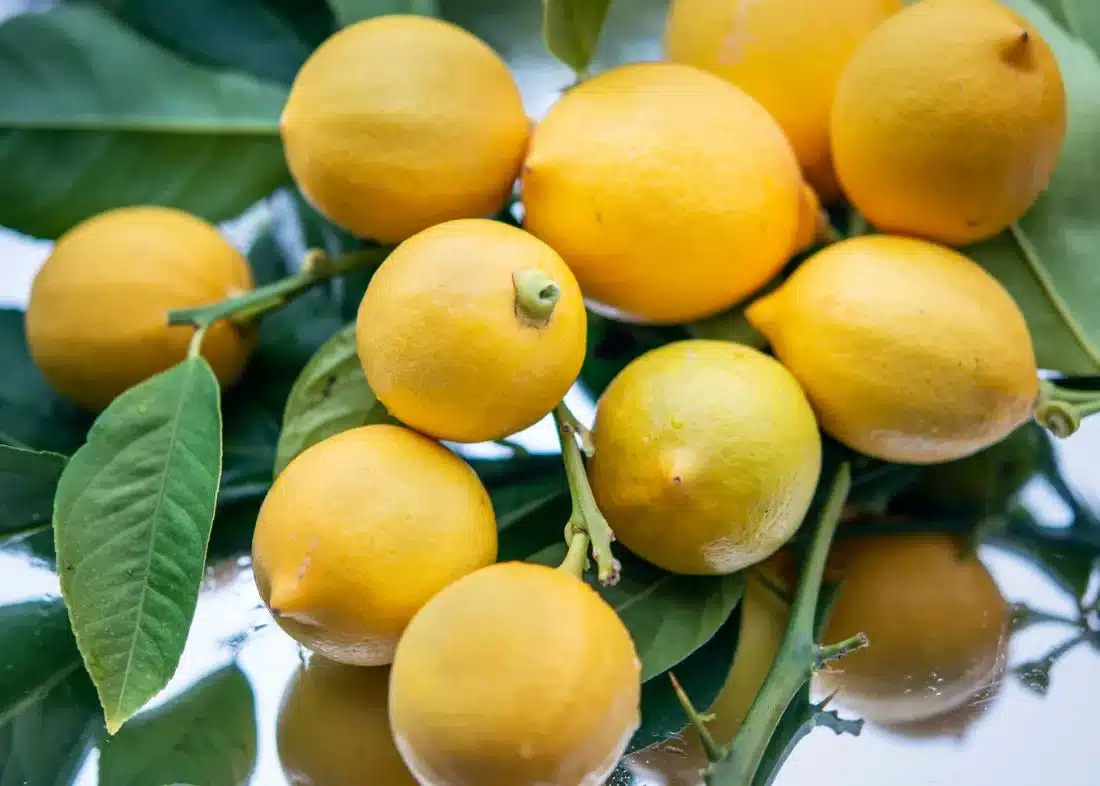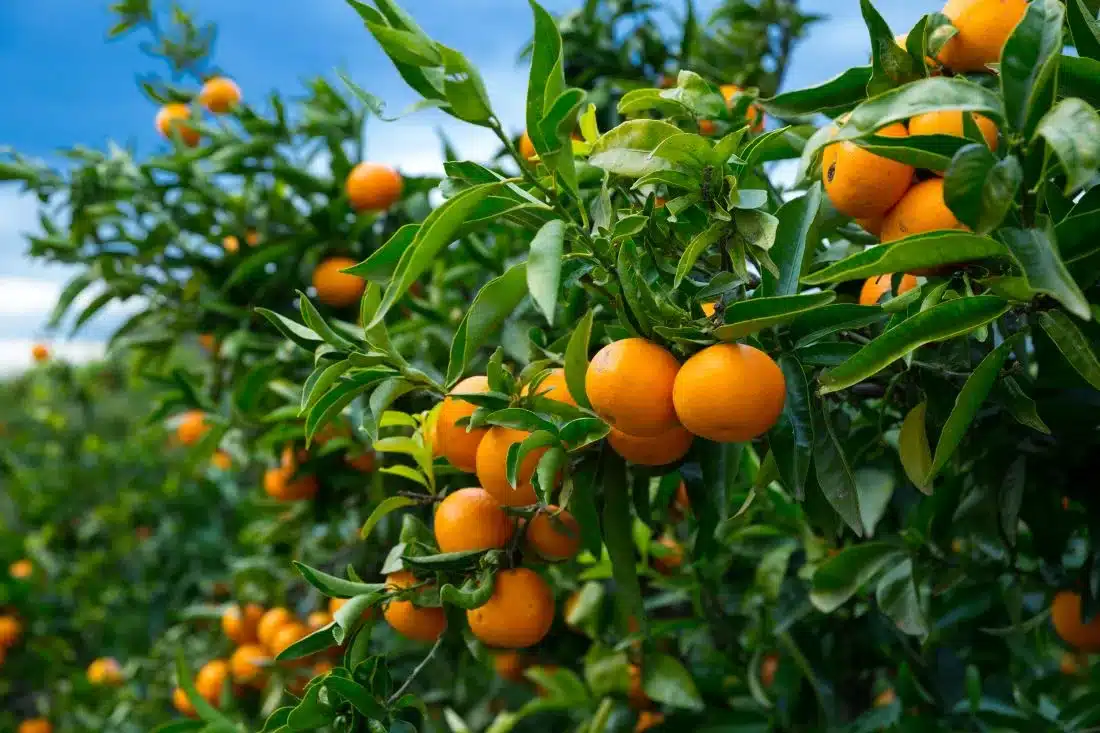Without doubt, citrus trees are the most popular fruit grown in home gardens. In gardens everywhere, citrus trees are delighting gardeners with fresh, tasty and vitamin-packed fruity goodness. With today’s smaller gardens, citrus trees are great in pots and there are dwarf and multi-grafted varieties available to suit most situations.

At a Glance
- Warm sunny position.
- Free draining soil.
- Lots of food.
- Water in summer.
Citrus are vitamin rich, great tasting and can be picked progressively over quite a long time. Mandarins begin to ripen from early June with oranges grapefruit and lemons holding on until November.
This winter-early spring fruiting makes citrus so valuable when other fruit is more expensive. They are also very attractive trees with their glossy green leaves, fragrant blossom in spring and coloured fruit in winter.
Where to Plant
Citrus will grow in warm or mild climate zones.
Providing frosts are not severe they will tolerate cool conditions. Citrus will thrive in hot inland conditions providing they have water. They require a sunny position protected from cold winds.
Citrus prefer a sandy or loam soil. They will tolerate clay soils providing they are planted on a raised bed with lots of compost mixed into the soil. Dig in Organic Compost or peat to help break up clay soils and improve the water-holding capacity of light sandy soils.
Citrus make ideal container plants, especially Mandarins and Limes. Use a quality potting mix with added water retention granules to ensure consistent summer water.
When to Plant
Citrus trees are available most of the year and can be planted anytime provided they are watered regularly in summer.
Citrus are big feeders. A moderately sized mature tree requires at least 500g of General or Citrus Food each year. Two thirds of this should be applied in late winter and one third in January. Pelletised Sheep Manure is a good alternative. Do not plant other crops or disturb the soil under citrus trees as their feeding roots are relatively close to the surface.
Watering
Citrus must be watered regularly through spring and summer. Irregular watering can cause fruit drop and fruit splitting, not to mention reduced yield and dry fruit.
Mulching
A layer of mulch spread over the surface under citrus trees will conserve moisture and improve performance. Take care however, to keep mulch away from the base of the tree trunk.
Pests and Diseases
Citrus trees are relatively free of insect pests, but occasionally can be attacked by scale insects, mealybug, aphids and mites. Ask your Burbank House & Garden about the best way to control these pests.
Varroosis is a fungal disease that sometimes attacks lemons causing rough fruit. Once again, ask the experts at Burbank about controlling this problem.
Scale is also a problem that can affect citrus plants. Treat with horticultural oil.
Pruning
Citrus tend to be self-shaping and so need little pruning.
Some mandarin varieties become a little thick and benefit from some thinning out, usually after picking the fruit.
Lemon trees may require pruning back to keep them compact and easy to manage. Make sure that any shoots below the graft are removed. These are easily identified as they have different foliage.
Prune citrus fruit on new season’s growth. We advise removing any fruit in the first year to encourage the growth of the tree and establish a good strong plant.
Making your selection

Lemons
The Meyer variety is very popular because of its reliable high yield over an eight-month picking period. The fruit is of medium size and sweeter than other varieties.
Lisbon and Eureka lemons are more acidic and often preferred by chefs.
Lemonade is a very sweet lemon that does taste like delicious lemonade, and deserves its increasing popularity. These ripen during spring.
There are a number of dwarf varieties available that are great in pots or small garden areas.
Grapefruit
Once you have eaten a red grapefruit you will never return to the old-fashioned ‘Wheeny’ or ‘Marsh Seedless’ varieties.
Wheeny and Marsh Seedless grapefruit varieties are the traditional grapefruit that many would know. Excellent for those who like a strong marmalade.
The red grapefruit varieties such as ‘Star Ruby’ and ‘Rio Red’ are becoming very popular. All red varieties are much sweeter than the non-red varieties.
Limes
Limes are a popular ingredient in the kitchen. Most popular is the Tahitian Lime. Tahitian limes are very hardy and crop heavily. They make an excellent container feature.
Kaffir Limes are mainly grown for the leaves and are an essential ingredient in Asian cuisine.
Mexican limes, otherwise known as ‘The Bartenders Lime’ is a small green fruit.
Limes need protection from frost until established as they do not tolerate heavy frosts.
Oranges
The seedless ‘Valencia’ orange is the best orange variety for most areas of Australia. It has few or no seeds. It is a fast-growing, hardy tree. The fruit ripens early (mid-September), but hold well on the tree for many months, making it a sweeter fruit than most other oranges in cooler areas.
The ‘Washington Navel’ orange produces its superbly sweet fruit in early winter. To eat the fruit off the tree, this is the best orange of all.
Navel oranges are rated very highly for flavour. Washington navel oranges are reliable in most areas of Australia. Washington Navel is rich in flavour. They are almost seedless and ripen mid to late winter.
Harwood Late are excellent for juicing. They are thick-skinned fruit that ripens in late winter.

Mandarins
Very popular with families because they are great in school lunch boxes due to the easy-peel nature of most varieties.
Imperials are the most popular mandarin variety because they are the first to be harvested each season. They are a golden-orange mandarin, and one of a handful of popular citrus varieties that have originated in Australia.
Murcott mandarin varieties are known for their attractive appearance and excellent flavour. It is a large variety with the reputation of being sweet. They are also a favourite for juicing.
Hicksons are the most common mid-season mandarin. They are also an Australian variety, originating in Queensland in 1941. Hicksons are known for their brilliant bright orange skin. Hicksons are easier to peel later in their season when their skins become slightly puffy or loose
‘Clementine’ has good flavour, and is a high-yielding reliable cropper ripening between August—October but is not an easy-peel.
Ask about the best variety for your situation.
Tangelos
These are a cross between grapefruit and oranges and now only grown by the citrus enthusiast.
For all the best local advice please speak to the friendly staff at Burbank.
